SUVs may be among the most popular new vehicle body styles, but that doesn't mean they're right for everyone. Some people don't care for the look, or the driving experience. So, the sedan is still an important part of the market. And in particular, if you're looking for something sportier, the lower ride-height and, frequently, less weight make them more fun to drive while still providing some amount of practicality. There are quite a few options that really nail the sporty side of things, and we've compiled the best ones on the market across all levels of cost to guide you in your car shopping.
Our picks are listed by alphabetical order. It's a highly varied list with gas, electric, hybrid, front-drive, rear-drive, all-wheel-drive and many other variants of powertrain. We've even fudged a bit to include some very sedan-like hatches. The key is that these cars have a sedan style and feel, and they're some of the most exciting and enjoyable cars in each of their respective segments.
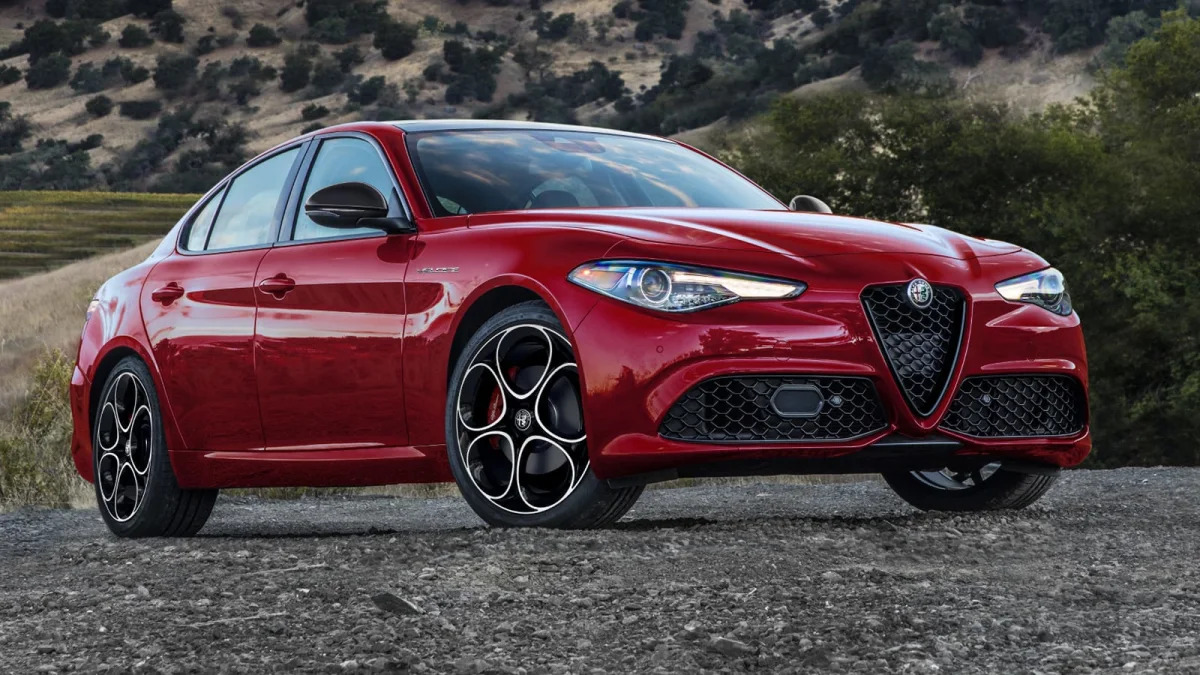

Alfa Romeo Giulia
Why it stands out: Punchy four-cylinder; astounding power from Quadrifoglio; light and nimble character; awesome shift paddles
Could be better: Clunky infotainment; sub-par switchgear
Read our Alfa Romeo Giulia review
We start this list with one of the most predictable inclusions: the Alfa Romeo Giulia. Yes, it's a stereotype that the Italian sport sedan is fun to drive, but the fact is, well, it is. The Giulia comes standard with a turbocharged 2.0-liter four-cylinder making 280 horsepower, making it one of the most powerful four-cylinders in the segment. It's paired with a snappy and smooth eight-speed transmission and either rear-wheel or all-wheel drive.
The engine is lively and torquey, if a little short of revs, and the chassis feels super-light. The steering is eager and the car jumps into corners. We also highly recommend getting a version with the enormous and superb aluminum paddle shifters that make clicking through gears much more entertaining. And on the topic of the interior, it's attractive, but the various switches and knobs feels a little cheap, and the infotainment system is clunky.
Of course there's also the incredible Giulia Quadrifoglio. It gets a Ferrari-derived twin-turbo 2.9-liter V6 making 505 hp, and it's rear-wheel drive only. It's one of the best driving cars on the planet with clear, talkative steering, loads of grip, and a nimble feeling. And obviously it's darn fast with all that power. You'll need to be pretty well off to afford its base price that tops $80,000, though.


BMW 3 Series and M3
Why it stands out: Lots of powertrain options; sure handling; available manual in the M3
Could be better: Annoying infotainment; numb steering; questionable styling
Read our BMW 3 Series review, our 330e long-term review updates and our M3 review
While it has faltered in the past, the small luxury sport sedan benchmark is in much better form in its current iteration. And there are many things that make the 3 Series appealing. It's available with a turbo four-cylinder, a plug-in hybrid four-cylinder, or a few different versions of a turbocharged straight-six. It also boasts a great interior with high-end materials and highly comfortable seats. And of course, every version has a quick and fun chassis.
The base 330i model gets a 255-hp turbo 2.0-liter four-cylinder. It's very responsive and makes great low-down torque. The eight-speed transmission, versions of which appear in all the 3 Series models, is fast and smooth, and one of the best in the segment. Steering is pretty numb, but the chassis is stiff and eager to corner. The BMW rides very well, too. For a bit more power, there's the plug-in hybrid that makes 288 hp and has up to 22 miles of electric range. It doesn't cost much more, either.
The four-cylinder models are solid, but the six-cylinder cars are, unsurprisingly, more exciting. The M340i's turbo six-cylinder makes 382 hp. It also gets upgraded suspension, brakes and an electronically-controlled limited-slip differential. Then there are the M3 models that increase power to 473 hp for the base model, and 503 hp for the Competition. They also get additional suspension, braking and transmission upgrades to make for some astounding sports sedans to rival the Alfa Romeo Giulia Quadrifoglio. The base M3 also boasts one of the only manual transmissions in the segment. With a base price that tops $70,000, it's not cheap, but it's quite a bit cheaper than the Alfa.

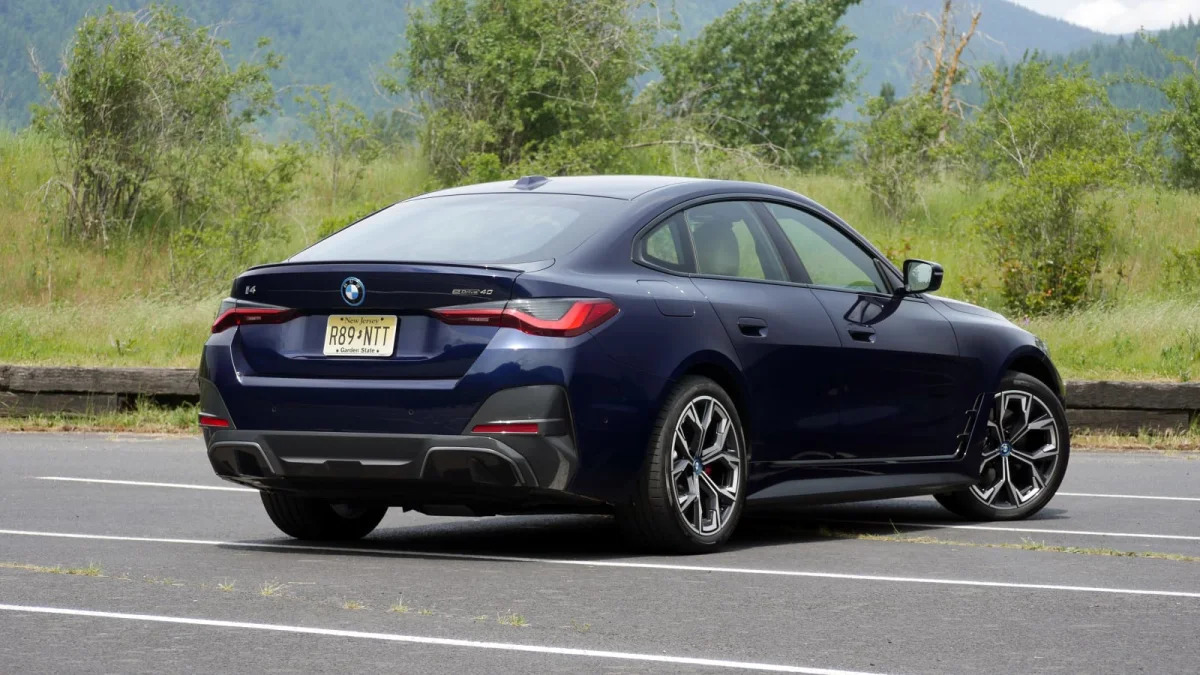
BMW i4
Why it stands out: All the goodness of the 3 Series and 4 Series Gran Coupe, but electric; available 300-mile range; M50 acceleration on par with M3
Could be better: Front-end design; annoying infotainment; M50 accelerates like a M3, doesn't handle like one
We've just gone over most of the positives of the BMW 3 Series sedan such as its strong driving dynamics, nice interior and wide array of powertrains. It's missing a powertrain, though: electric power. And that's where the i4 comes in. It's based on the 4 Series Gran Coupe, which is itself basically a 3 Series four-door with a hatch, and it adds either one or two electric motors. It's all the 3 Series goodness, but fully electric.
The base motor is reasonably strong at 335 horsepower, and will run the i4 to 60 mph in 5.5 seconds. And equipped correctly, it'll go 301 miles on a full charge. It's also more powerful than the base 3 Series or 3 Series plug-in hybrid. The M50 packs a pair of motors making 536 horsepower, more than the M3 and M4, and it'll get the car to 60 mph in under 4 seconds. That's M-car acceleration without a drop of fuel.
Unfortunately, there isn't a full-M version of the i4, so handling will always be on the softer side. But you still get the quick steering and composed chassis you would expect from any other 3 Series model. The interior is also just as nice as any other 3 Series, but shares the frustrating latest iteration of BMW's iDrive tech interface.

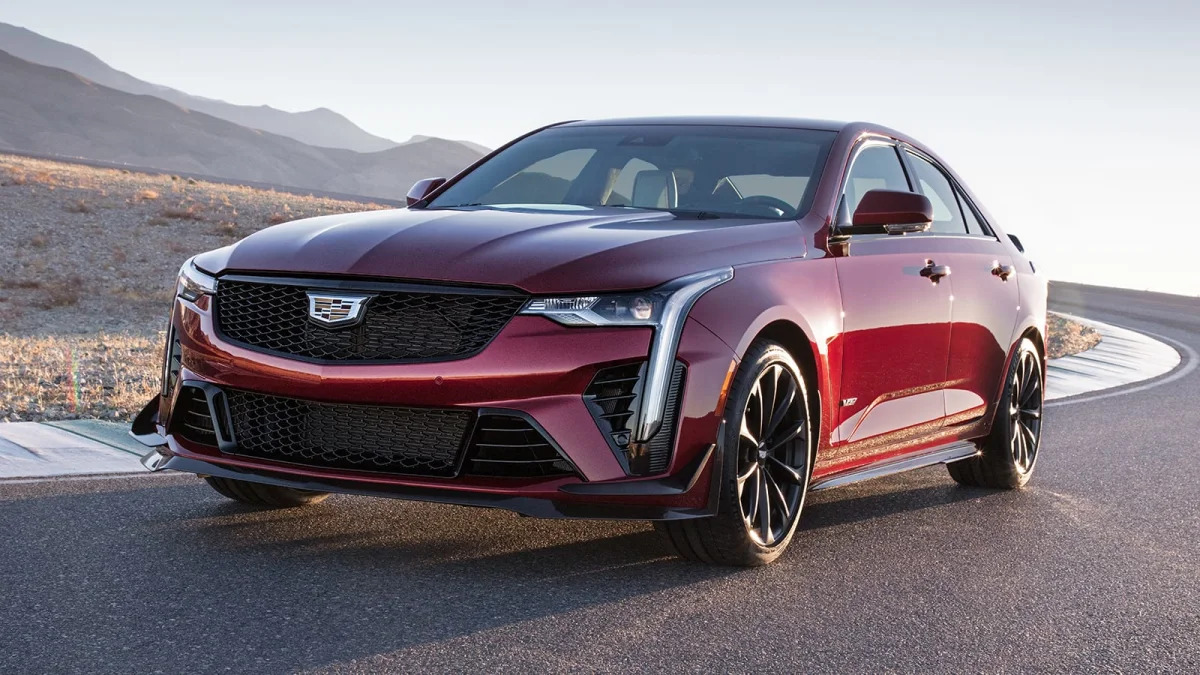
Cadillac CT4
Why it stands out: Extremely communicative steering and chassis; strong four-cylinder options; powerful Blackwing model; available manual transmission
Could be better: Interior is a bit bland; manual only on the Blackwing; base four-cylinder isn't particularly inspiring
The 21st century has been a time of reinvention for Cadillac as it transitioned from floaty barges to world-class sport sedans. The Cadillac CT4 represents one of the last internal combustion Cadillacs, and it's a superb example of the breed with excellent handling, impressive refinement, and the availability of an incredible halo model.
There are three basic iterations of the car, starting with the base turbocharged 2.0-liter four-cylinder making 237 hp or a 310-hp turbo 2.7-liter four-cylinder. Above that is the CT4-V with a 325-hp version of that 2.7-liter engine, and the monster CT4-V Blackwing with a 472-hp twin-turbo V6. Only the Blackwing is available with a six-speed manual transmission, and the four-cylinder cars are the only ones available with all-wheel drive.
If you can, we recommend stretching to at least one of the 2.7-liter models, but every CT4 is extremely composed and responsive in its moves, with immense communication. It's one of the most engaging cars in the segment. And of course, the Blackwing improves things immensely, and is a rare manual option in the high-end compact sport sedan segment. It's so good, one of our editors actually bought one. If that's not a ringing endorsement, we don't know what is.

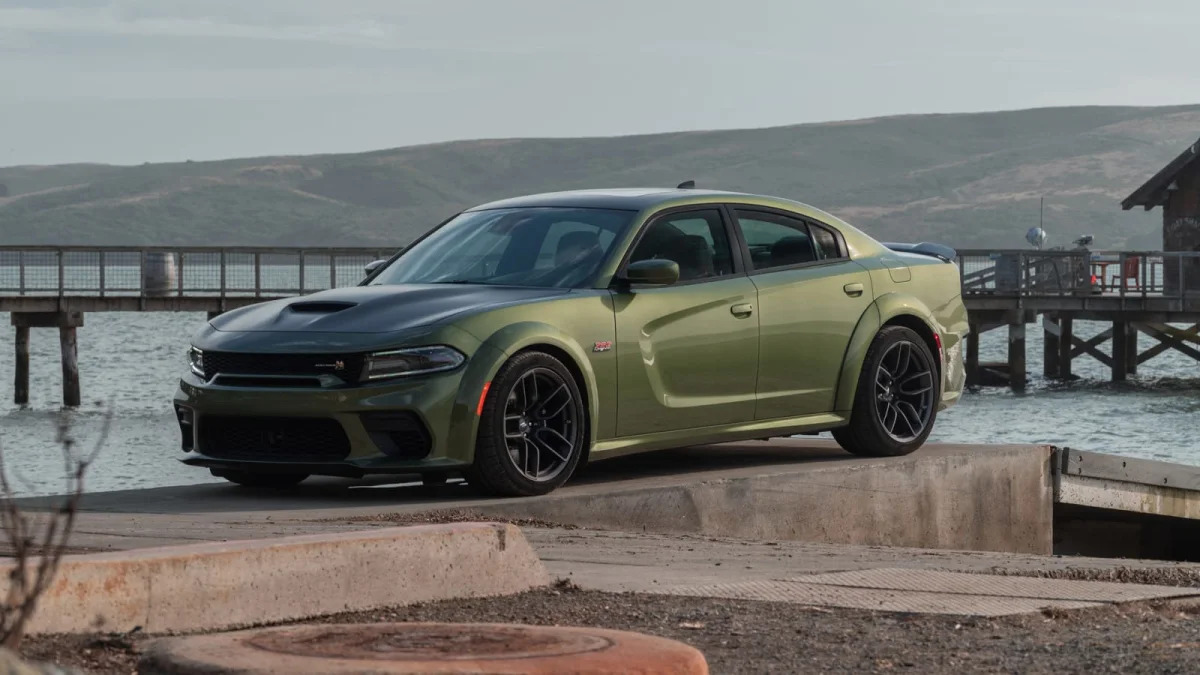
Dodge Charger
Why it stands out: Massive available power; amazing sounds; smooth and responsive transmission; stylish design; fast and functional infotainment system
Could be better: Weak fuel economy; dated and relatively small interior with subpar quality; non-SRT models aren't very sporty; all-wheel-drive only available with the V6
The Dodge Charger isn't exactly a conventional sport sedan, but that's a big part of the appeal. You can't really get big rear-drive sedans with big, naturally aspirated V8s anywhere else. And they're paired with a velvety transmission and wrapped in curvy, aggressive bodywork. Shockingly, they're even pretty good to drive when cruising or hitting corners thanks to a compliant suspension and surprisingly good grip. Sure, it's still heavy and the steering isn't particularly responsive, but it's not bad, and the powertrain's endless charisma makes up for any shortcomings. Just check out our comparison of an SRT 392 with a Kia Stinger GT (the latter of which you'll find farther down the list). Plus, the Charger offers lots of power for the money, especially the V8s: the 370-hp R/T, 485-hp Scat Pack, 707-hp Hellcat and 797-hp Hellcat Redeye. Those are absurd power figures for their price point and/or just absurd power figures, period.
Of course, it's not entirely positives with the Charger. The cabin, while packing a quite good infotainment system, is dated, a bit cave-like and not as spacious feeling as you would expect from such a large car. All-wheel drive is only available with the V6, which is actually a solid engine, but doesn't feel particularly sporty. And of course the V8 models that you want for fun driving get, well, sub-optimal fuel economy (every V8 model gets less than 20 mpg combined). Still, the Charger is a unique and character-packed vehicle for not much money that's worth your consideration. But act soon, because the Charger line will be gone at the end of next year.

Genesis G70
Why it stands out: Excellent bang for the buck; extremely powerful V6; brilliant chassis; user-friendly infotainment
Could be better: Cramped back seat; transmission could be sharper
Our final choice from the compact luxury sport sedan segment is probably the best value, the Genesis G70. It comes with either a turbocharged 2.0-liter four-cylinder making 252 hp, or a beefy twin-turbo 3.3-liter V6 making 365 hp. Both come standard with an eight-speed automatic and rear-wheel-drive, with all-wheel drive as an option. And pricing starts around $40,000 for the four-cylinder, and $45,000 for the V6. So for basically the same price as the four-cylinder Alfa or BMW, you can have some serious horsepower. Or if you want the four-cylinder, you can have a healthy discount.
The low price doesn't mean the Genesis sacrifices quality or driving fun. The V6 in particular is a blast. It feels underrated, with the two turbos pinning you to the seat when they spool up. The chassis is rock-solid, balanced and communicative. The transmission feels a beat behind those used in the Alfa and BMW, but doesn't get in the way of enjoying the car. The four-cylinder isn't as exciting, but the chassis is just as good, and the lighter engine makes it a bit more nimble.
The interior materials could be a little nicer, but panel gaps are tight and everything feels solid. The infotainment system is far easier to use than either of the European cars on this list, too. And the G70 is even better looking now than when it came out. If you're looking at a fun sedan from this segment, you can't ignore the G70.
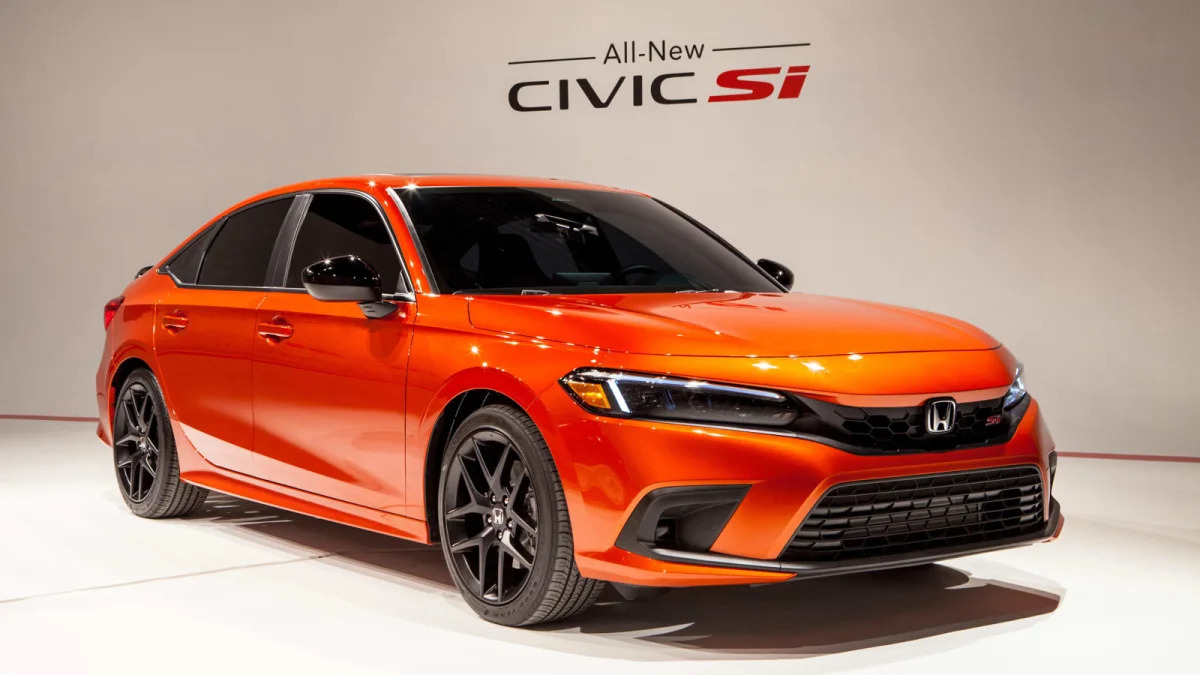

Honda Civic
Why it stands out: Affordable price; excellent fuel economy; spacious interior; loads of convenience and performance features; manual transmissions
Could be better: Low on power in Si trim; no manual option for non-Si sedan; no automatic transmission option for Si or Type R; Type R is expensive
Read our reviews of the Honda Civic, Si and Type R
We're stretching the terms of a sedan here a bit with some of these versions of the Honda Civic, since the Type R is actually hatchback-only as is one of the most enjoyable regular models (the Hatchback Sport Touring with its manual transmission). But we've already included one car that's technically a hatchback (the BMW i4), and there are a few others here that technically feature a hatchback over their trunks. And the fact of the matter is, the Type R is amazing, and even the regular Civic options are pretty darn good, so we felt compelled to mention them.
Now digging in, the base Civic is a great car all around with a huge cabin, attractive dash, useful infotainment and comfortable ride. But it also has a light and nimble chassis. The base naturally aspirated engine is a bit anemic nowadays, especially only paired with a CVT, but the turbo 1.5-liter engine's 180 horsepower is punchy. In the hatchback, it's also available with a slick manual transmission that ups the fun factor enough that you should genuinely ask yourself whether you really need an Si or mechanically related Acura Integra.
Should the answer to be "yes!", the Si builds on this with a slightly hotter 1.5-liter engine making 200 horsepower. More importantly, it comes with a standard mechanical limited-slip differential, stiffer suspension and better seats. It's a little slow compared to a Subaru WRX or VW GTI, but it's one of the best steering, shifting and turning sedans you can get for less than $30,000.
And then there's the Type R. It is a culmination of everything Honda is known for, making possibly the best front-drive car in the world, one that can very seriously be compared to all-wheel-drive competition like the Toyota GR Corolla and VW Golf R. As with its more modest siblings, much of the advantage goes to superb steering, super-slick shifting and deft handling. It makes an impressive 315 horsepower that actually puts the amazing chassis in contention with the competition in straight lines, too. Unfortunately, it's quite expensive at just under $45,000. But it is an amazing car.
Hyundai Elantra N
Why it stands out: Amazing performance to price ratio; great infotainment; great seats and spacious interior; excellent manual transmission and solid dual-clutch automatic
Could be better: Not much
Read our Hyundai Elantra N review
You'll be hard pressed to find a better performance deal for any car, period, not just sedans, than the Elantra N. You get 276 horsepower and 289 pound-feet of torque, all of which comes on so smooth and stays so steady that it feels stronger than the rated output. It goes through your choice of an excellent six-speed manual or a great (if not quite excellent) dual-clutch automatic. Then there's the amazing electronically-controlled mechanical limited-slip differential that makes it grip and turn like hardly anything else that drives only the front wheels. It even has electronically adjustable suspension and exhaust to make it all as hardcore or as mellow and comfy as you like. And you get all of this for just $33,245.
And while we touched on it, we need to emphasize that the driving experience is not just excellent for the price. It's excellent, period. The grip is amazing; the steering is weighty and accurate; the power is robust but controllable. It's a car that begs you to drive it harder and harder, and hardly shows any weakness. It's just so good. And the fact that it's affordable, spacious and has all the expected features of a modern commuter make it an almost unmatched all-'rounder.
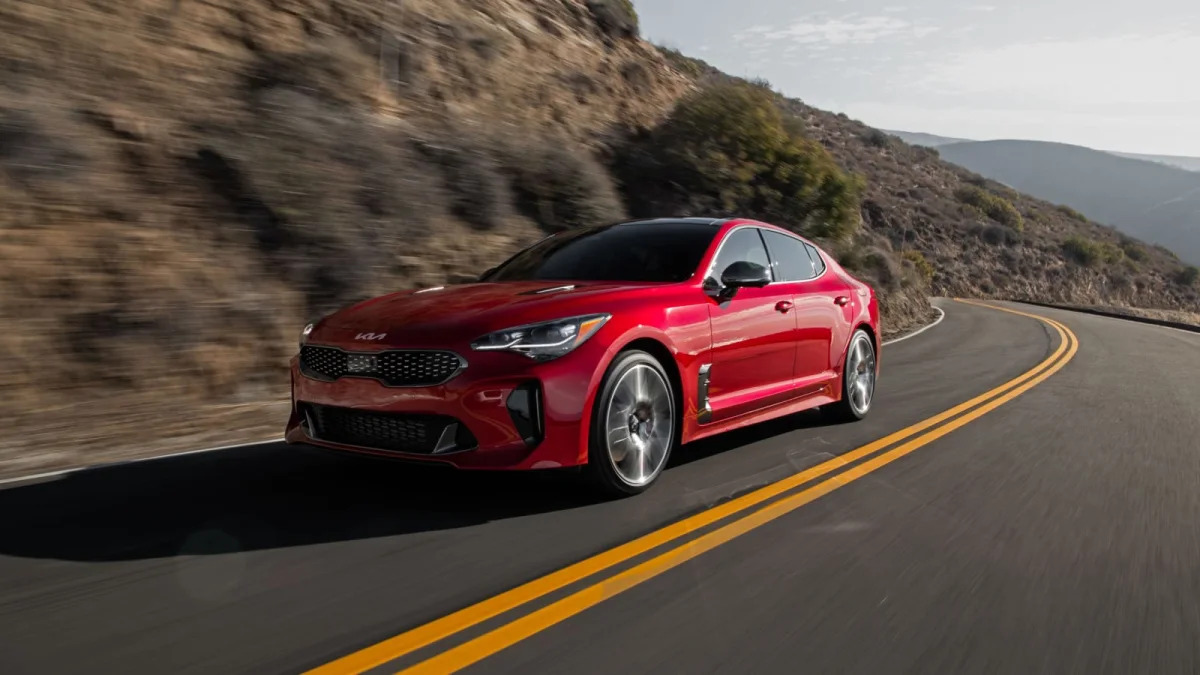
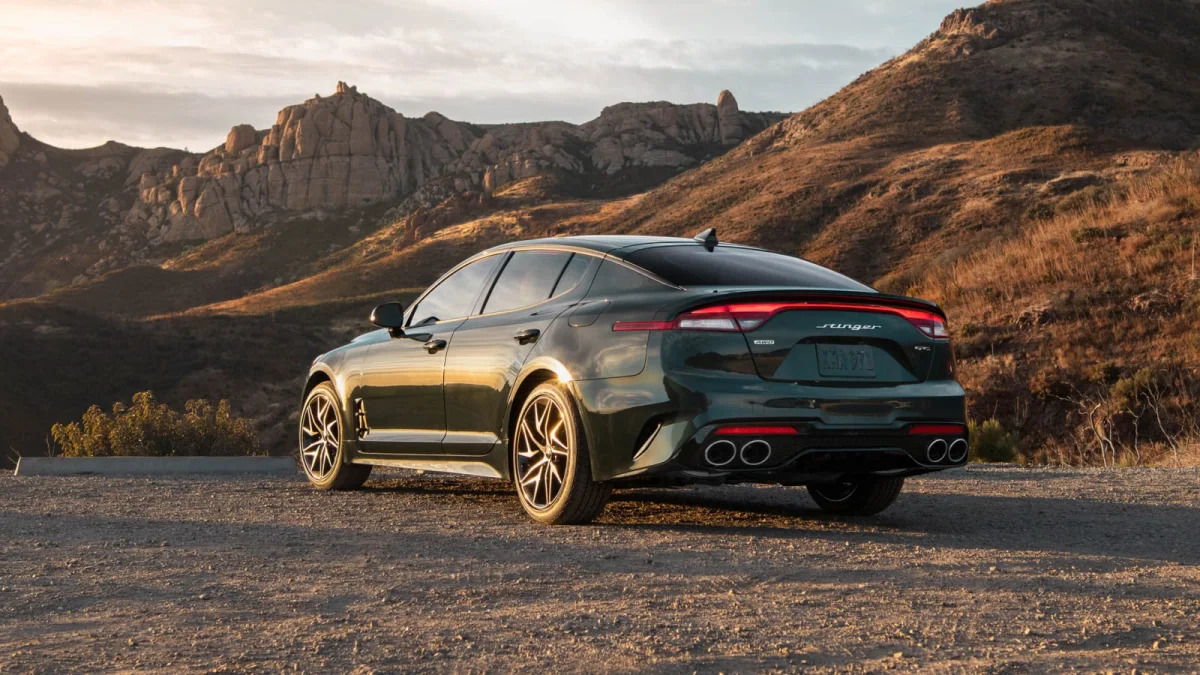
Kia Stinger
Why it stands out: Excellent value; seriously stylish; lots of interior room; hatchback versatility; great chassis
Could be better: Could have a nicer interior; transmission could be sharper
Read about the new Kia Stinger
The Kia Stinger is closely related to the Genesis G70 we've already talked about, and that means that all the basic goodness still applies. But there are, of course, differences. The most obvious of which is the body style. It's notably larger than the G70, and its fastback roofline disguises a practicality-enhancing hatchback. It's arguably even better looking than the conventional G70, and interior space benefits from the extra size, too.
It gets similar powertrains, too, but not identical. The base model gets a turbocharged four-cylinder, but it's a larger 2.5-liter unit making 300 hp. The twin-turbo V6 is basically the same and makes 368 hp. Both engines are coupled to an eight-speed automatic and either rear-wheel or all-wheel drive. The V6 is still the most exciting, and feels just as strong as in the G70, and the chassis is just as well-balanced, making for a highly-entertaining experience. In a comparison, we even preferred the Stinger GT to the more powerful Charger Scat Pack (also listed above). It was a close one, though.
Compared with its G70 cousin, the Stinger interior isn't as nice, but it's still stylish, and as we've said before, it's much more spacious. And being a Kia and not a Genesis, it's more affordable, at least in four-cylinder-guise. The four-cylinder starts around $37,000. The V6 starts around $52,000, making it a bit pricey compared to the Genesis. The V6 Stinger does come standard with a limited-slip rear differential, an option on the Genesis. It's also larger and has a practical hatchback.
Mazda3
Why it stands out: Clean, classy styling; premium interior; excellent steering and handling; available all-wheel drive; punchy turbo option
Could be better: No manual for sedan or turbo options; tight rear seat; non-touchscreen infotainment system
On the affordable end of the sport sedan spectrum, many of our choices are brash, overtly sporty cars. But if you're on a budget and want something that's both sporty and refined, something you must check out is the Mazda3. It has restrained, elegant styling inside and out, even on the 250-horsepower, all-wheel-drive Mazda3 Turbo. The materials inside also back up the premium feel.
Performance-wise, the Mazda3 sedan has a fairly potent naturally aspirated 2.5-liter engine to start with making 191 horsepower. And of course, there's the responsive and torquey turbo engine we just mentioned. Both are smooth and easy to manage. They have somewhat old six-speed automatic transmissions as the only option, but they're fairly smart about gear selection in auto mode and have a responsive-enough manual mode. If you do choose a hatch, you can get a solid manual transmission. The handling is the sweet spot, though, with extremely sensitive and precise steering with pretty good feedback. The chassis is very stiff, responsive and neutral. And it does this all without being loud or harsh. In the way the VW GTI is a sort of grown-up hot hatch, the Mazda3 is a sort of grown-up version of the grown-up hot compact.
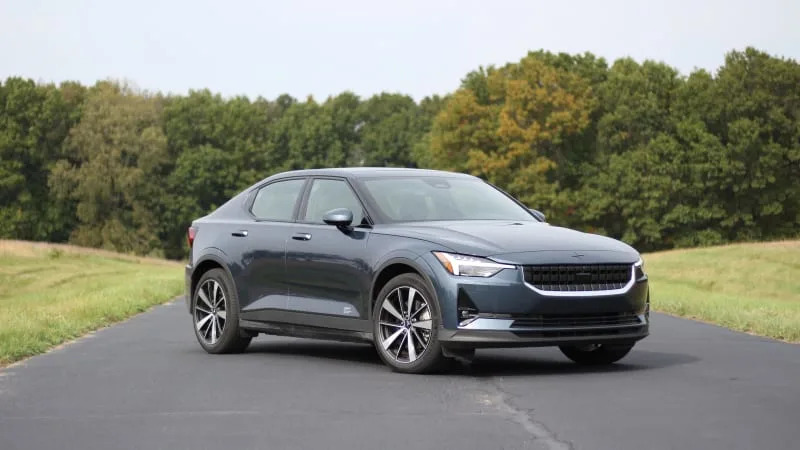
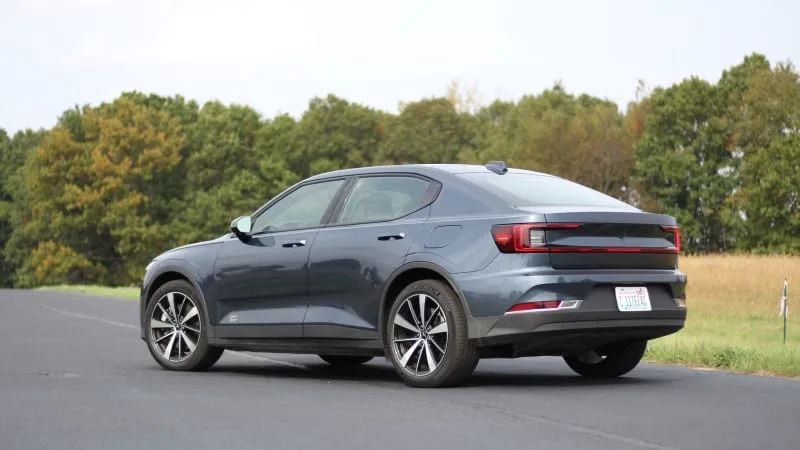
Polestar 2
Why it stands out: It's electric; it's an electric sedan with exceptional handling; excellent driving position; strong power; unique performance options
Could be better: Base model is a bit sluggish and expensive; interior doesn't feel particularly upmarket
There's no shortage of fast electric cars out there, but ones that go beyond straight-line performance are a bit more unusual. The Polestar 2 is one of those EVs that's great in every performance factor, particularly in handling. No matter the version, the Polestar 2 is remarkably agile, and somehow, it feels far lighter than it is, a surprising feat for an electric car. It feels very balanced, even with the single-motor, front-drive layout. It's simply a joy to run through corners.
While both powertrains available in the Polestar do have great handling, there's a big gap in acceleration between models. The base, single-motor car makes 231 horsepower, which is adequate, but not inspiring. The dual-motor model on the other hand offers 408 horsepower and all-wheel drive. It feels genuinely fast, and at just $3,500 more for nearly double the power, we highly recommend opting for it. You only lose 10 miles of range, too.
And on the topic of additional performance, the Polestar 2 offers a Performance Pack that adds upgraded Brembo brakes and some very serious manually-adjustable Ohlins suspension (yes, you need to get out of the car and fiddle with knobs on the shocks). It even increases power beyond the 408 horsepower to 469. And if you go light on the other options, you can have a maxed-out performance Polestar 2 for less than $60,000, which is a lot of performance for the money.
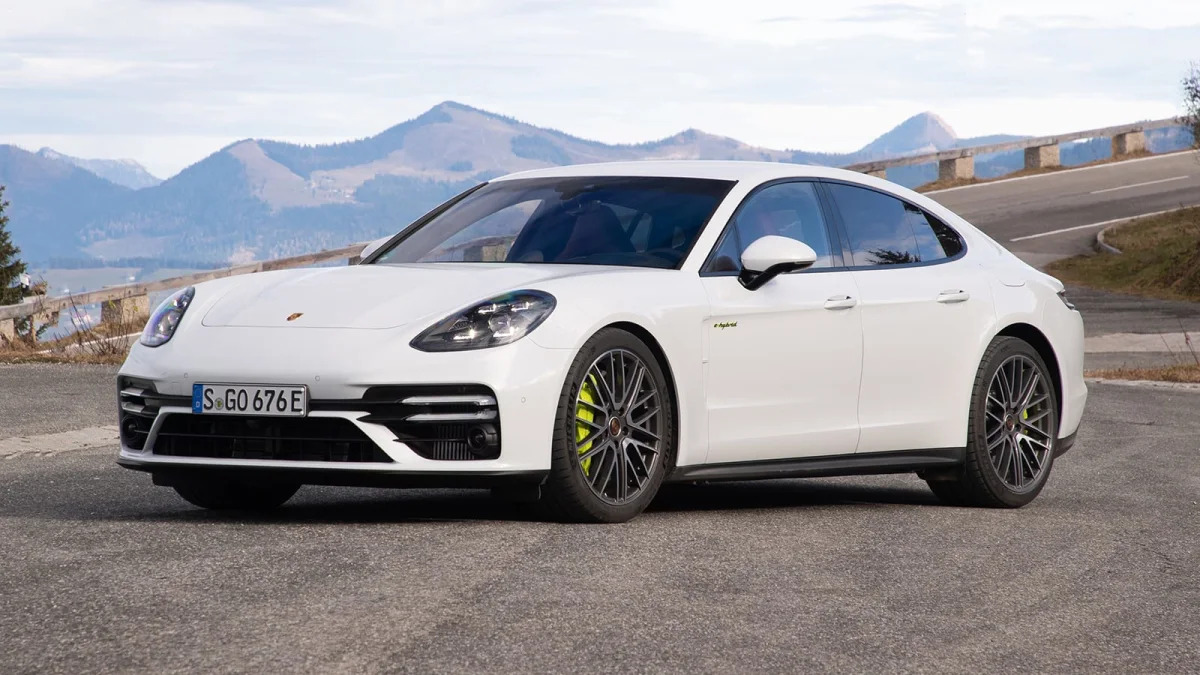
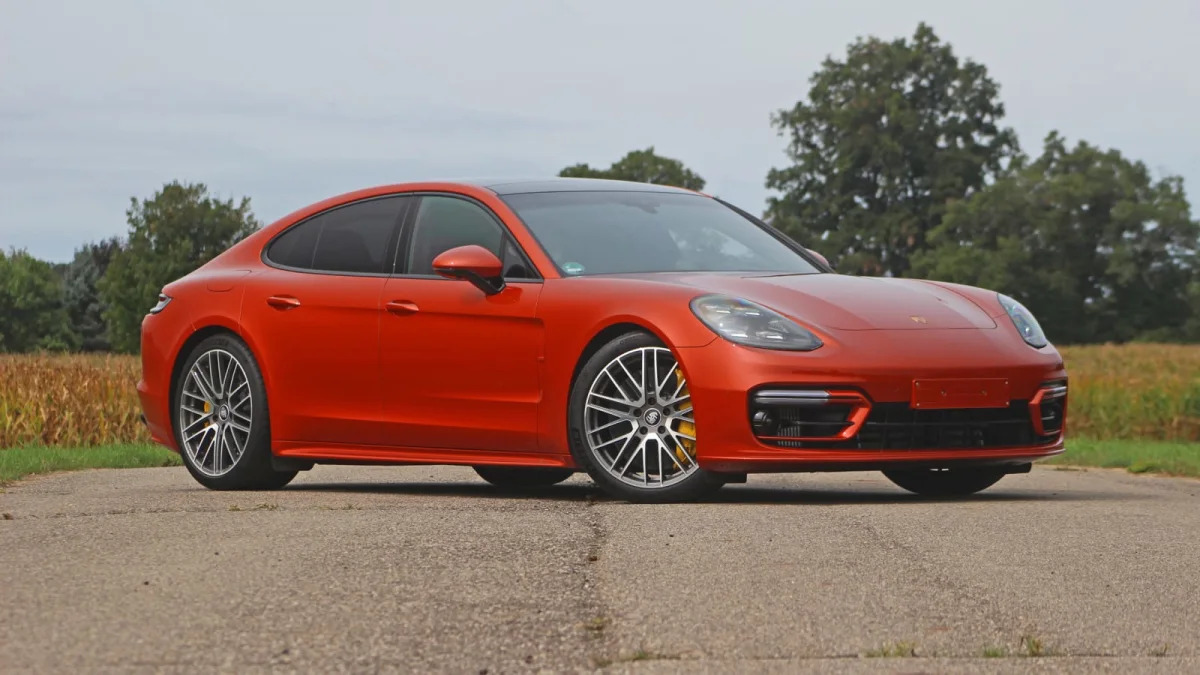
Porsche Panamera
Why it stands out: Porsche handling; throaty V8s; available plug-in hybrid models; hatchback practicality
Could be better: Expensive; snug back seat; touch-operated interior controls and air vents
Read our Porsche Panamera review
It's hard to talk about sporty cars without bringing up at least one Porsche, if not more, and the same applies with sedans. The Panamera is a brilliant example, and one that offers an impressive array of flavors. At the base of the range is the more sedate twin-turbo V6 model with 325 hp, which still gets it to 60 mph in a brisk 5.3 seconds. And at the top is the Turbo S E-Hybrid with a whopping 690 hp from its electrified and twin-turbocharged V8. That's not even the only hybrid variant, as you can have the V6 paired with the plug-in hybrid system with 455 or 552 hp. And each plug-in has between 17 and 19 miles of electric range available, depending on trim. You can add all-wheel-drive, too, as you can with most of the Panamera line-up.
And the reason you'll want one is just how excellent it is to drive. It has pinpoint-accurate steering with hefty, but not heavy, weight. It corners flat and tells you what's happening. It takes off with authority in the higher-power forms, and the transmission shifts instantly with no disturbances. And it does it with a quiet, comfortable interior and surprising practicality thanks to its liftback (there's even more space if you get the Sport Turismo wagon). The V8 models provide the most aural excitement, but it certainly isn't required for a good time. Key drawbacks are that it's rather heavy, the back seat is snug, and prices are hefty both to start and for the massive options list. Oh, and the Taycan exists.

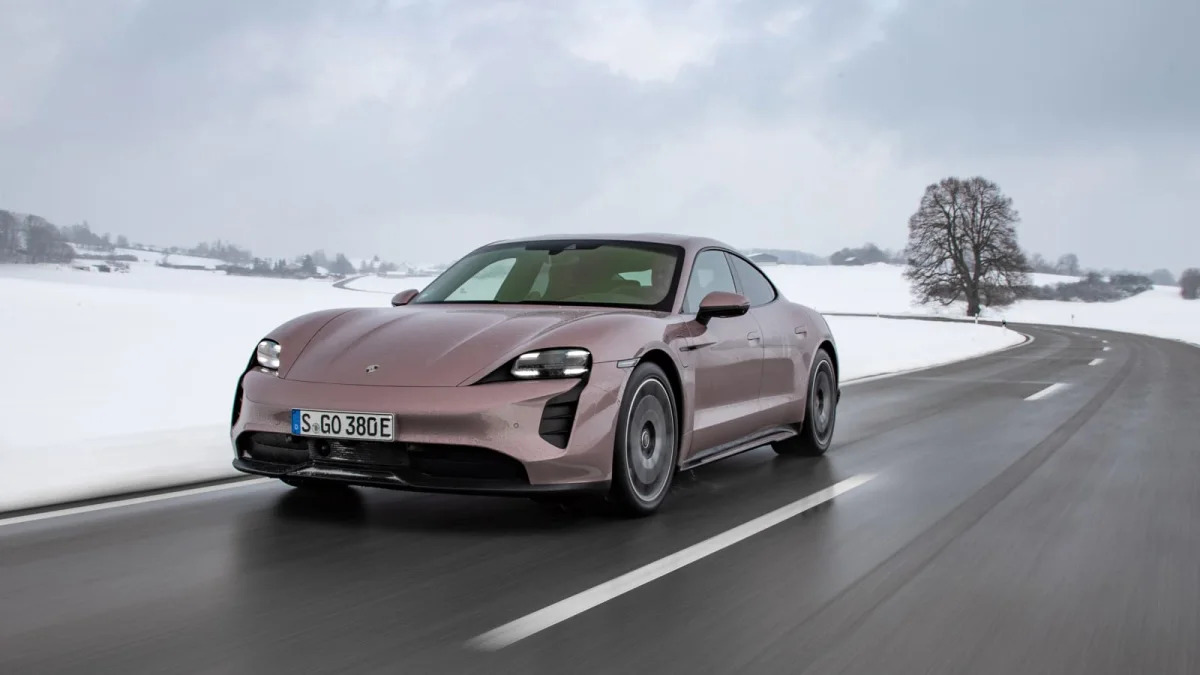
Porsche Taycan
Why it stands out: Fully electric; incredible performance; Porsche handling, steering, build quality
Could be better: Official range isn't amazing; quite expensive; tight back seat
Read our Porsche Taycan review
A great sports sedan doesn't have to dramatically burn gasoline, as proven by the sensational Porsche Taycan. Every version of it is fully electric, with the base version featuring a single motor and rear-wheel drive, and higher trims offering two motors and all-wheel drive. And they come in fast, faster and fastest versions. The base one makes 321 hp, the 4S makes 429 hp, the GTS 590 hp, and the Turbo and Turbo S make 616. All of these models can deliver more power briefly, and that's the main difference between the latter two, which have "overboost" maximum outputs of 670 and 750 hp, respectively.
All of them obviously provide oodles of immediate torque -- the regular Taycan will push you against the seat while the Turbos will try to crush you. And the rest of the driving experience is pretty much exactly what you expect from a Porsche. The steering is perfectly weighted, precise and provides reasonable feedback. There's hardly any body roll and it feels neutral and balanced. Despite the weight of the batteries, it feels like a lighter, smaller car. Range is between 199 and 225 miles depending on model, though we've found that it can easily outperform the EPA numbers.
The interior is typical Porsche, too; well-crafted with good materials, but a bit plain on the design front. Interior space is a bit tight for rear occupants due to its narrow door opening and low, swoopy shape. Pricing is also classic Porsche, with the Turbo S topping $186,000 before any options. But the base model starts at a far more reasonable $84,000. The 4S, GTS and Turbo dip deep into six digits with options. We would actually recommend the entry-level models that are still very fast and loads of fun, but for far less money than the Turbo models. And if you need more space, there is the Cross Turismo and Sport Turismo wagon versions.
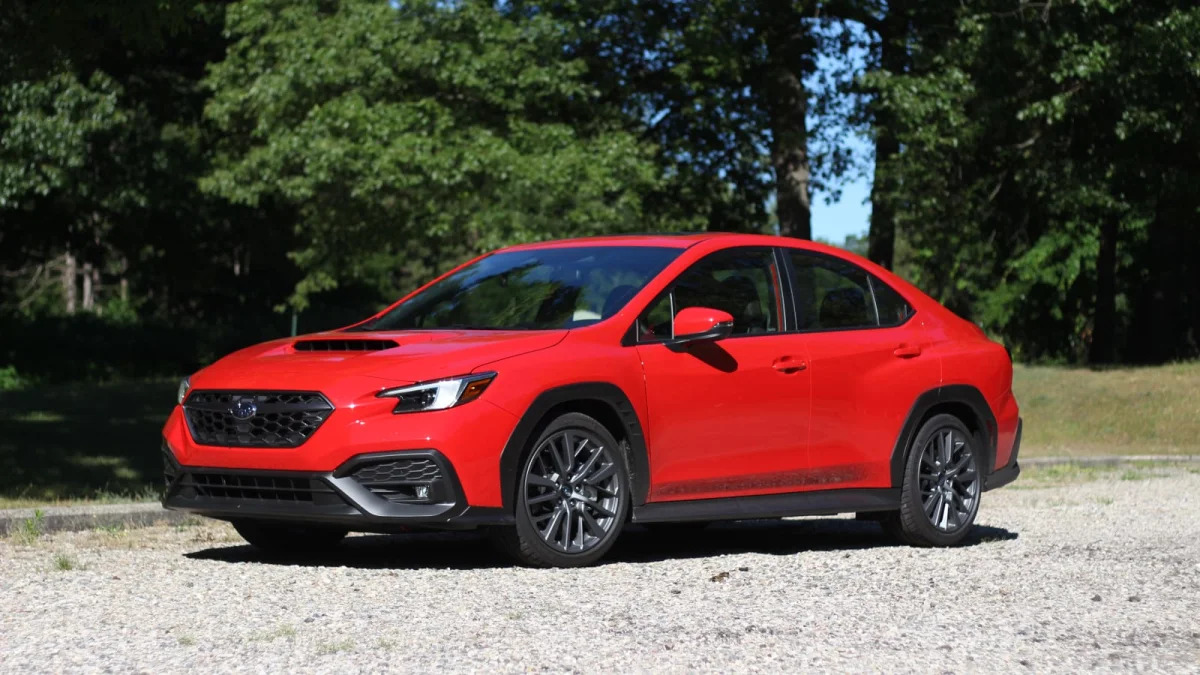
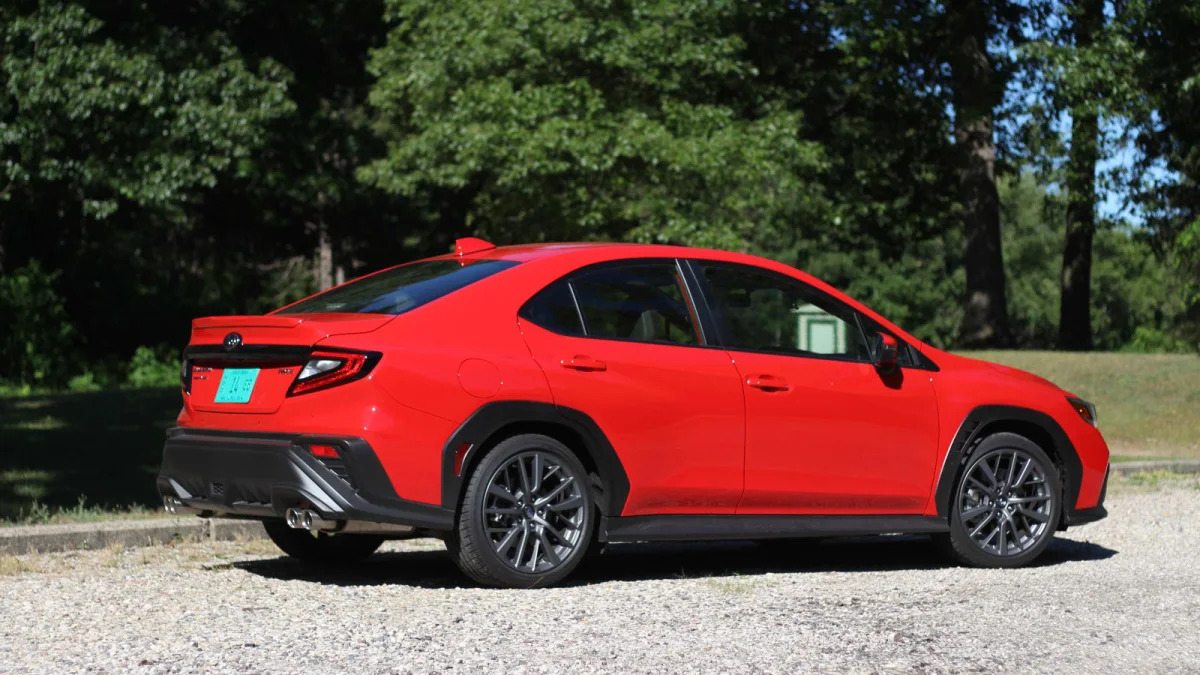
Subaru WRX
Why it stands out: Lots of power for the money; standard all-wheel drive; standard manual transmission
Could be better: Base model is light on convenience features; CVT isn't particularly fun; a bit thirsty; low-rent interior
One of the other more budget-oriented sport sedans here is another value-packed car. The Subaru WRX comes standard with a turbocharged 2.4-liter flat-four making 271 hp. It's paired with a six-speed manual transmission, but if you need something that shifts itself, it is available with a CVT. That being said, if you can, we'd suggest going for the manual. Not only is it more fun, it's more efficient with a combined fuel economy of 22 mpg versus 21 for the CVT. And like every Subaru besides the BRZ, it has all-wheel-drive. And of course it has upgraded suspension and a wider body than its cousin the Impreza. The GT trim with the CVT even gets electronically adjustable suspension.
In practice, the WRX has amazing grip and feels fairly neutral under throttle thanks to its all-wheel-drive system. The new 2.4-liter engine feels more robust out of boost, and when the turbo is spooled up, it adds power more smoothly than before. Still, it's not as seamless as some other competition, which, depending on your point of view, can be a good thing or a bad thing.
At right about $30,000, it's relatively affordable. It's a bit spartan as far as features, but there are better-equipped trim levels available for a bit more money. All WRX have a better interior than before, but they still aren't exactly luxurious. They do have really nice seats, though. But if you're more concerned about performance than comfort, the WRX is a great option.


Volkswagen GLI
Why it stands out: It's basically a GTI with a trunk; avoids the terrible infotainment of the GTI; fairly well-equipped; excellent automatic option
Could be better: Only one trim; a bit expensive; less powerful than GTI; no mechanical LSD
As has always been the case, the VW GLI continues to pretty much be a GTI with a trunk. At least it mostly is. The current version is hampered against the hatch with less power (228) and a lack of a mechanical limited-slip differential (it just gets the brake-based limited-slip system). But we've found that, even with those shortcomings, the driving experience is still very close to the legendary hatch. The engine has a broad, smooth torque band, the shifter is pretty decent, and it has electronically adjustable suspension. It allows the GLI to both ride very comfortably, but also corner impressively. And if you need an automatic, the GLI is available with a seven-speed dual-clutch transmission that remains one of the best in the business. Most of competitors have a far less desirable auto option (WRX) or none at all (Honda Civic Si)
And it has a number of benefits over the GTI. The GLI doesn't have the newer infotainment system, so it still has useful buttons and knobs for navigating and adjusting climate control settings. It also has a much more spacious and usable rear seat.
The GLI is only available in one trim level now: Autobahn. That's a high trim level in VW-speak, and that means it comes pretty well-equipped with a power sunroof, power leather seats with heating and ventilation, dual-zone automatic climate control, adaptive cruise control and more. But it also means it's a bit expensive at around $32,000. Adding the dual-clutch automatic brings the price to around $35,000.
Watch the Cadillac CT4-V Blackwing on-road and on-track:
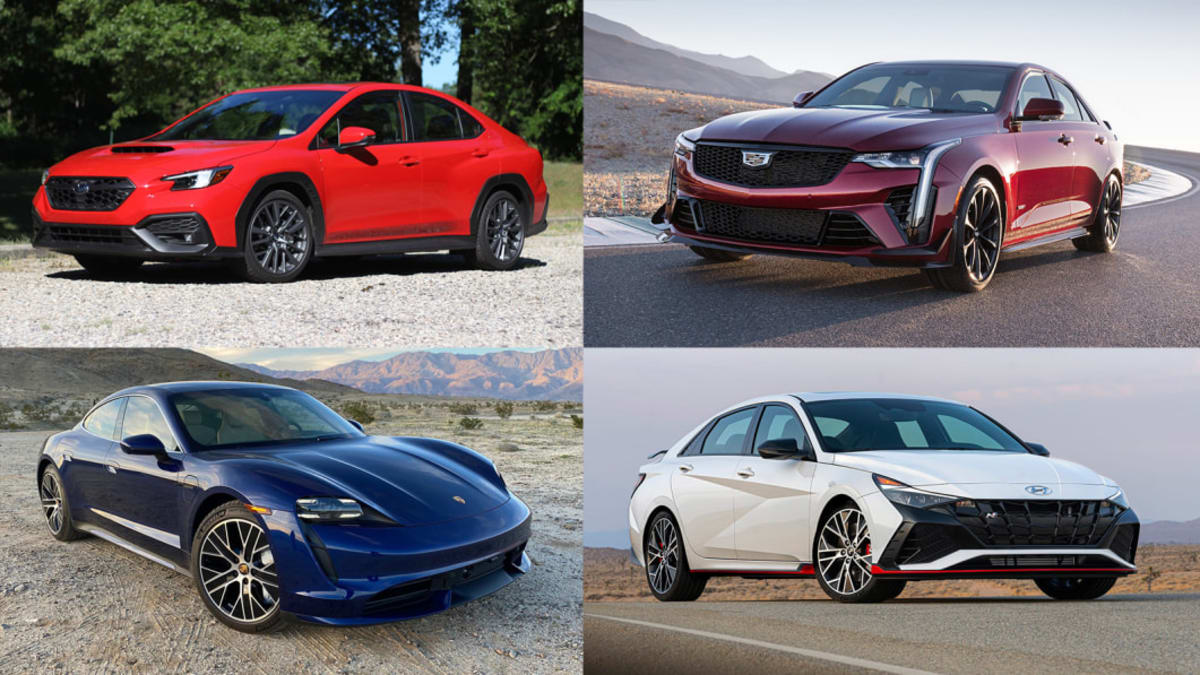

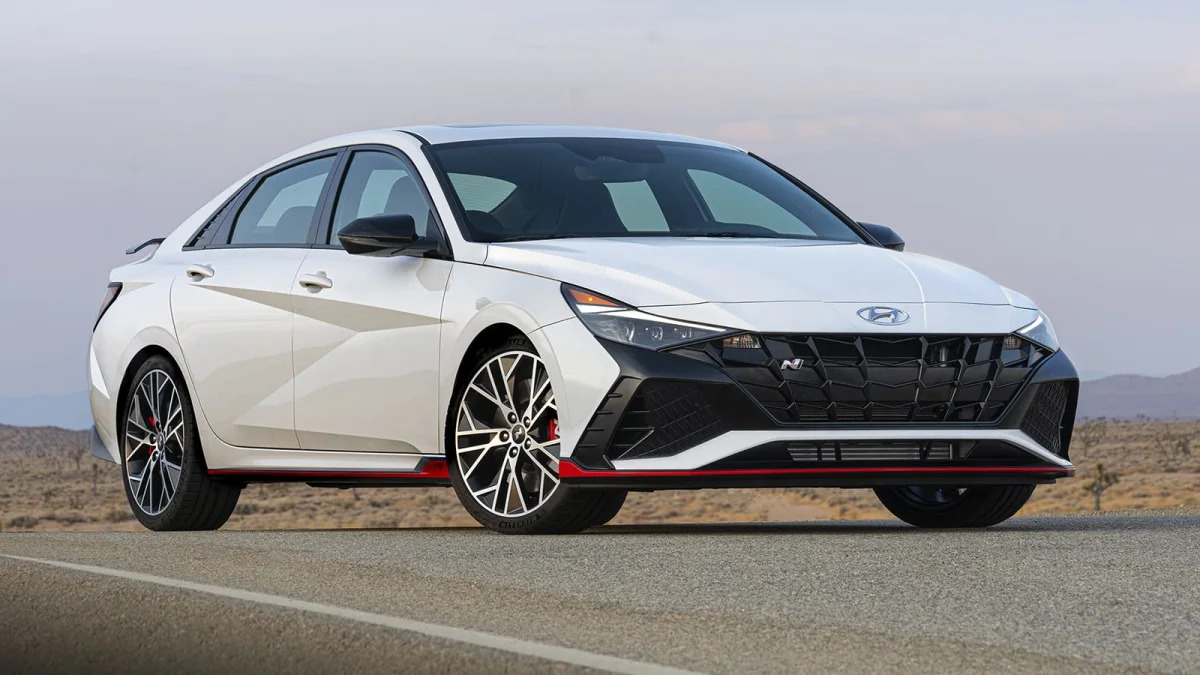
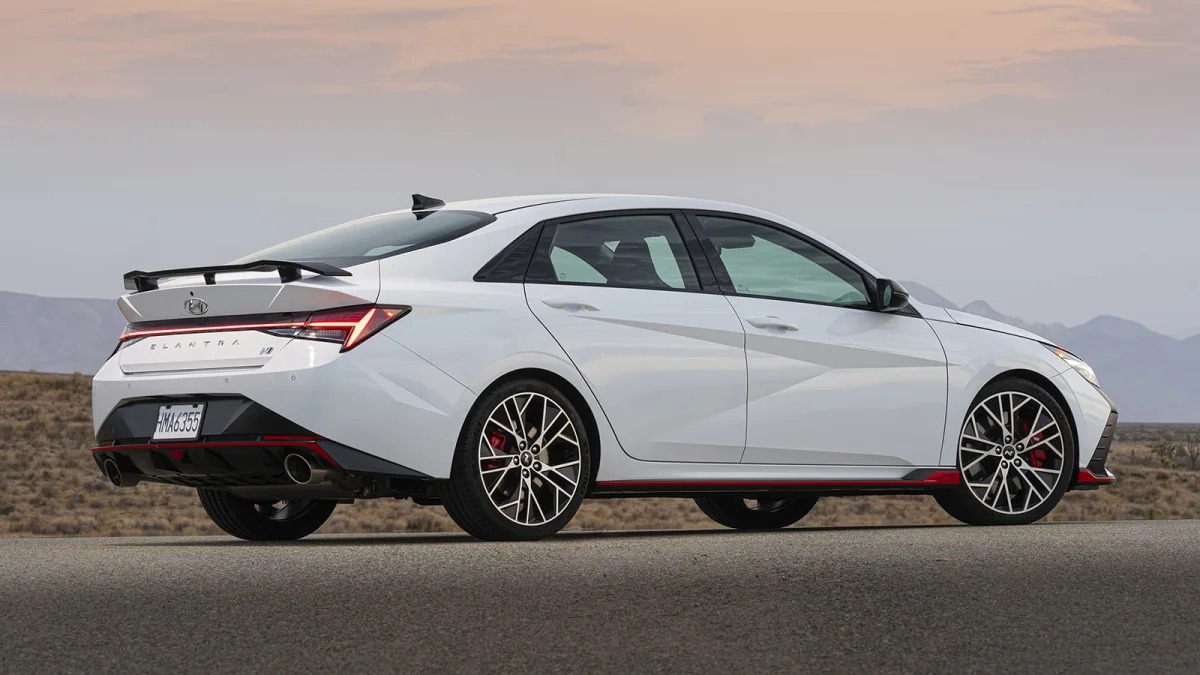
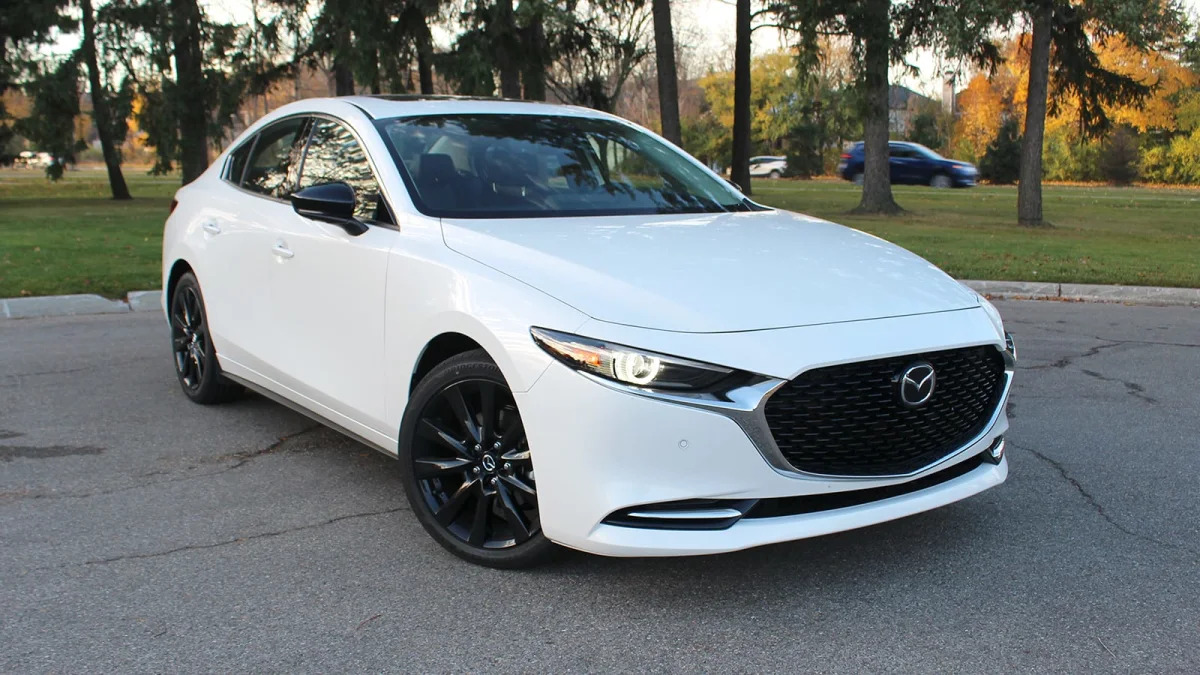
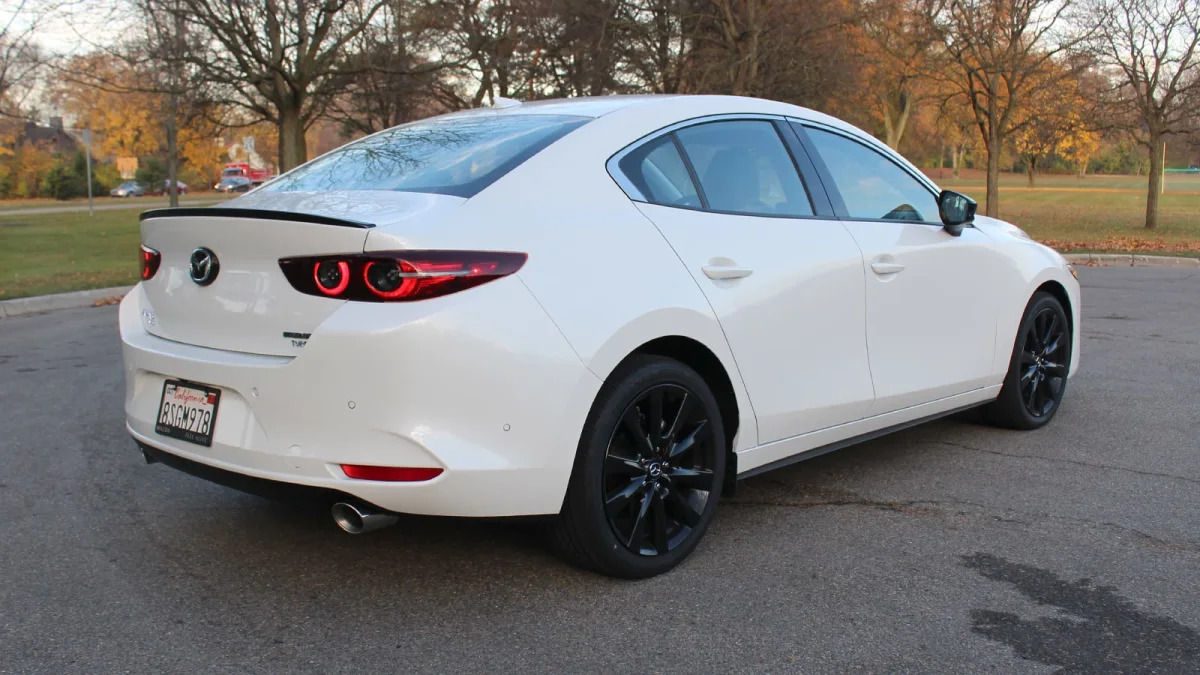

Sign in to post
Please sign in to leave a comment.
Continue